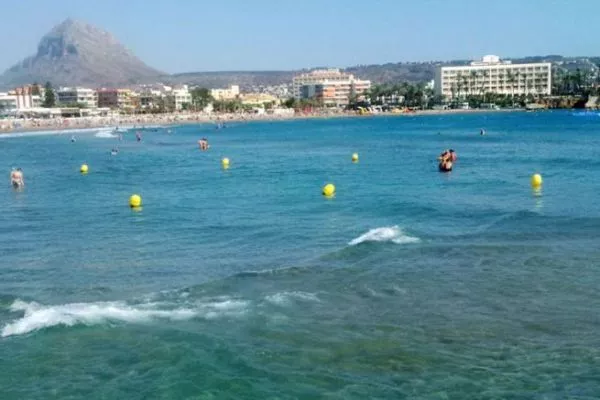Coastal Marking: The Role of Yellow Buoys
Along our shores, yellow buoys serve a crucial purpose, marking important zones for boaters and beach visitors alike. These vivid markers are increasingly essential, especially in busy coastal areas, where their installations may be seasonal. Understanding their implications, usage, and adherence to regulations is vital for both safety and enjoyment while boating.
Purpose of Yellow Buoys
These yellow buoys are strategically placed to delineate various zones along the coast. Each buoy signals different types of areas, ensuring safe navigation for vessels and protecting swimmers. It is important to note that these buoys are not illuminated during the night, which underscores the need for vigilance.
Buoys typically indicate:
- The limit of the 300 meter zone
- Ferry channels
- Areas closed to motorboats
- Swimming-only zones
Understanding the 300-Meter Strip
The 300-meter zone is bordered by large yellow spheres, which are positioned approximately every 200 meters. Within this strip, which lies between 0 and 300 meters from the shore, the speed limit for all types of vessels is capped at 5 knots. This limitation is designed to ensure the safety of swimmers and beachgoers while allowing for proximity to the shoreline, barring ferry channels.
Navigating Ferry Channels
Distinctively marked by yellow conical buoys to be kept on the starboard side during entry and yellow cylindrical buoys to remain on the port side, ferry channels are vital routes for boats returning to the beach. This is typically where passengers embark or disembark. Similar to the coastal zone, a speed of no more than 5 knots is required within the ferry channel.
Motorboat Restriction Zones
To safeguard beaches, zones may be designated as off-limits to motorboats. These areas are indicated by tightly spaced yellow spherical buoys, effectively signaling that no motorized equipment, including jet skis, is permitted within.
Swimming Zones
Swimming areas are easily identifiable by a necklace of smaller yellow spheres, indicating places where swimming is permitted. In these regions, no floating craft—whether sailing, powered, or oared—are allowed, ensuring swimmers can enjoy the water undisturbed.
Historical Background of Buoyage Systems
The system of marking water channels with buoys has evolved significantly over the years. Early recognitions of the need for navigation aids led to various buoy styles and practices. Each buoy’s color, shape, and light pattern communicate essential information to navigators and boaters.
Modern buoy technology addresses visual and navigational needs, with solar-powered lights becoming commonplace. Buoys can be classified based on their functionalities, including lateral marker buoys, cardinal buoys indicating safe channels around hazards, and special marks that may denote pipelines or prohibited zones. The effective maintenance and strategic placement of these buoys are paramount for safety in busy maritime areas.
Why Staying Informed Benefits Boaters
Staying updated on buoy regulations and coastal markings enhances the overall experience for both seasoned sailors and newcomers. Recognizing these signals not only improves boating safety but also fosters respect for shared waters. GetBoat continually monitors developments in sailing and seaside leisure, understanding the importance of a safe and enjoyable maritime environment.
The freedom to navigate coastal waters with confidence and clarity is at the core of what GetBoat represents, allowing individuals to chart their own adventurous journeys across azure waves. This approach reflects the boundless possibilities available when choosing the right boat or rental, tailored to specific tastes and budgets.
Explore Unique Boating Opportunities with GetBoat
With GetBoat, experience the ultimate convenience in finding the perfect boat to suit any adventure. Whether you’re sailing solo, with a partner, or gathering a group of friends, there’s a diverse selection waiting to be explored. Detailed listings with comprehensive information, from make and model to ratings, make it easier than ever to select the ideal vessel for your trip.
Summary of Key Points
In conclusion, understanding coastal yellow buoys is essential for ensuring safe navigation and a memorable experience on the water. These markers play a vital role in delineating zones, protecting swimmers, and aiding boaters. Boating offers an exceptional avenue to explore new locales, where every bay and lagoon has its story to tell, just as rich as local cuisine, culture, and architecture. If you’re planning your next trip to the sea, don’t overlook the importance of boat rentals—after all, each inlet, bay, and lagoon adds depth to the overall experience just as much as local flavors and charm. For more details, check out GetBoat.com.
Charting Your Next Adventure
As the conversation around maritime navigation continues to evolve, the implications of buoy regulations and coastal markings for tourism are significant. They not only enhance safety but also enrich the experience of exploring coastal treasures. Start planning your next seaside adventure with confidence by booking with GetBoat—make sure you don’t miss the chance to sail into new experiences!

 The Significance of Coastal Yellow Buoys">
The Significance of Coastal Yellow Buoys">
